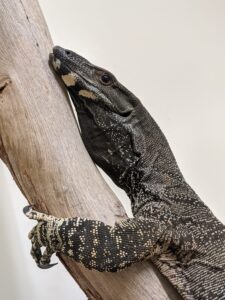Advices
Rat/mouse Bait Toxicity in Birds of Prey (raptors)
Birds of Prey (also known as Raptors) are hunting birds such as eagles, hawks and owls. Many Bird of Prey species in Australia feed on small mammals, including rodents. This means that they be exposed to rat and mouse poison by eating a poisoned animal – this is known as secondary poisoning.
Most rat and mouse baits available in Australia (e.g. ‘Ratsak’®) are anticoagulants. They kill rodents by stopping the blood from clotting properly and causing bleeding. These baits have the same effect on any species that eats them, including animals which experience secondary poisoning.
If you have found a live Bird of Prey that you suspect has rat bat toxicity, please contact WIRES Riverina on 1300 094 737 or call your local veterinary clinic.
DO NOT TOUCH OR HANDLE Birds of Prey as they may cause injury to inexperienced handlers.
What can you do?
- If you need to use baits on your property, make sure that you follow the label directions for that product.
- Remove any old or damaged bait stations.
- Remove deceased rats and mice as soon as possible so that they cannot be eaten by other wildlife.
More information:
Australian Veterinary Pesticides and Medicine Authority: https://apvma.gov.au/node/87226
Wildlife Health Australia factsheet: https://wildlifehealthaustralia.com.au/Portals/0/ResourceCentre/FactSheets/Multiple/Rodenticide_Toxicity_in_Australian_Wildlife.pdf
Species:
Clinical Signs:
Numbers:
Advice Types:
Chytrid fungus in Australian Frogs
Chytrid fungus causes a fungal infection in the skin of frogs and is the most important cause of frog population declines in Australia and globally. Chytrid fungus is present in NSW and is expected to be present in the Riverina.
Affected frogs may appear normal, have red skin or increased skin shedding, or may just be found deceased. Some frogs may show abnormal behaviour including lethargy and slow movement.
If you have found a live frog and you think it may be infected with chytrid fungus, take it to a local veterinarian as soon as possible.
Chytrid fungus is a notifiable disease in Australia – this means that anyone who knows or suspects that an animal is infected with chytrid fungus has a responsibility to report it to the relevant authority.
If you have discovered large numbers of deceased frogs, contact the Emergency Animal Disease Hotline on 1800 675 888 or report online at https://www.dpi.nsw.gov.au/biosecurity/report-a-pest-or-disease
Learn more about Chytrid fungus in Australia here:
NSW Office of Environment & Heritage https://www.environment.nsw.gov.au/threatenedspeciesapp/profile.aspx?id=20009
Wildlife Health Australia factsheet
Species:
Clinical Signs:
Numbers:
Advice Types:
Sarcoptic Mange in Wildlife
Sarcoptic mange is caused by infestation with the skin mite Sarcoptes scabei. It primarily affects wombats, feral red foxes, wild dogs and dingoes but many other species can be affected. Infection causes hair loss and thickening of the skin. In wombats in particular, the disease is very severe and cracks in the thick skin can become infected, which can lead to death.
What to do if you see an animal with mange:
- If you have identified a live wombat and you think it may have mange, please contact WIRES Riverina on 1300 094 737 to get in touch with a local wildlife rescuer.
- If you have identified a deceased wombat with mange on public property, please contact your local council regarding disposal of the body.
- If you have identified a live or deceased fox, wild dog or dingo with mange please contact your local council or Local Land Services Riverina on 1300 795 299.
Sarcoptic mange from wildlife may cause a mild infection in people – if you have been handling wildlife and you think you may be infected, contact your general practitioner for advice.
Find our more information on Sarcoptic mange in wombats in NSW here: https://www.environment.nsw.gov.au/topics/animals-and-plants/native-animals/rehabilitating-native-animals/curb-wombat-mange-program
Species:
Clinical Signs:
Numbers:
Advice Types:
Foot and Mouth Disease
Foot and mouth disease (FMD) is a highly contagious viral disease that affects pigs, cattle, sheep, goats, deer, camelids (includes alpacas, llamas and camels) and buffalo. FMD does not affect horses, or companion animals such as dogs and cats. FMD is not the same as hand-foot-and-mouth disease which is a common disease in young children.
Australia is currently free of FMD, and an introduction would have a severe impact on Australia’s agricultural industry. Wildlife in the Riverina that could be affected by FMD are feral pigs, feral goats and feral deer.
Affected animals show blisters, ulcers or scabby lesions on the hooves and mouth/snout. The photos below show some examples of hoof and mouth/snout lesions (NSW Department of Primary Industries).
Any animals that are showing signs of possible FMD should be reported immediately to the Emergency Animal Disease Hotline on 1800 675 888.
More information about FMD can be found here: https://www.dpi.nsw.gov.au/animals-and-livestock/beef-cattle/health-and-disease/viral-diseases/fmd
Species:
Clinical Signs:
Numbers:
Advice Types:
Exercise Caution with Venomous Snakes
DO NOT TOUCH OR HANDLE venomous snakes.
Australia has many species of venomous snakes which can inflict a fatal bite. Most snake bites occur when people are attempting to handle or injure a snake. If you are unable to identify the species of snake, you should treat it as though it is venomous.
If you have identified a sick or injured venomous snake contact WIRES Riverina on 1300 094 737 or look for a licenced reptile handler in your area here: https://www.environment.nsw.gov.au/licences-and-permits/wildlife-licences/catch-and-release-licence/reptile-catch-and-release-licences#reptilehandler
If you have been bitten by a snake, seek immediate medical attention by calling 000.
Species:
Clinical Signs:
Numbers:
Advice Types:
Exercise Caution with Bats
DO NOT TOUCH OR HANDLE any species of bat.
Bats may be infected with Australian bat lyssavirus, which is very similar to rabies. This virus causes a fatal infection in people. Bats must only be handled by trained and vaccinated wildlife rescuers. Please contact WIRES Riverina on 1300 094 737 for assistance with sick or injured bats.
More information on Australian bat lyssavirus can be found on the NSW Health website: https://www.health.nsw.gov.au/Infectious/factsheets/Pages/rabies-australian-bat-lyssavirus-infection.aspx
Species:
Clinical Signs:
Numbers:
Advice Types:
Join our Community!
Join our wildlife health community to learn about and contribute to wildlife health in our region.
Click this link to register: https://riverinawildlifehealth.com.au/wp-login.php?action=register

Species:
Clinical Signs:
Numbers:
Advice Types:

